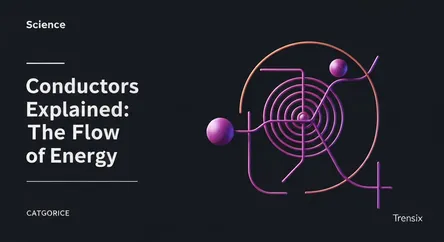Science
Conductors Explained: The Flow of Energy

Learn what conductors are, how they allow electricity and heat to move freely, and why they are fundamental to our technology and daily lives.
What is it?
A conductor is a material that allows energy, such as electricity or heat, to flow through it with minimal resistance. In electrical conductors, like copper or silver, this is possible because their atoms have loosely bound electrons that can move freely, creating an electric current. Thermal conductors, such as metals, efficiently transfer heat energy from one particle to another. These materials are the opposite of insulators, which restrict the flow of energy. Common examples of conductors include most metals, saltwater, and graphite.
Why is it trending?
Conductors are always relevant, but interest is spurred by innovations in green technology and electronics. The development of more efficient power grids, fast-charging batteries for electric vehicles (EVs), and next-generation computer chips all depend on advanced conductive materials. Furthermore, scientific research into superconductors—materials with zero electrical resistance at very low temperatures—and novel conductors like graphene promises to revolutionize energy transmission and computing, keeping the topic at the forefront of material science.
How does it affect people?
Conductors are integral to modern life. Every time you turn on a light, charge your phone, or use an appliance, you rely on the electrical conductors in the wiring. The pots and pans you cook with are made of thermal conductors to heat food evenly. Advances in conductor technology directly impact people by improving energy efficiency, which can lower electricity bills and reduce environmental impact. They also enable the smaller, faster, and more powerful electronic devices that have become essential in our daily routines.